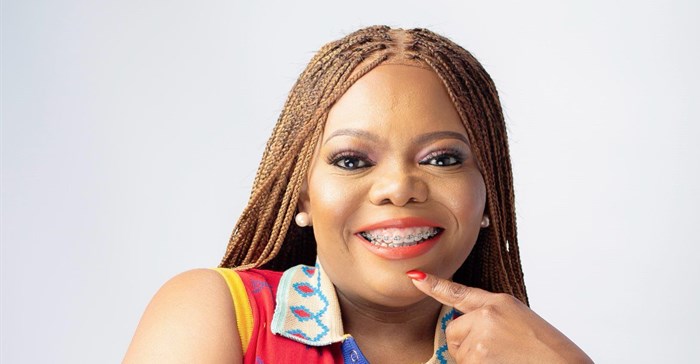Challenger brands are the new maestros in sectors as varied as tech, motoring, healthcare, and energy, orchestrating a market shift towards options that resonate with the consumers' chorus for value.

As purse strings draw tighter under the strain of an economy in flux, challenger brands are stepping into the spotlight says Lebo Madiba, PR Powerhouse
As purse strings draw tighter under the strain of an economy in flux, challenger brands are stepping into the spotlight.
These brands aren't just filling gaps; they're crafting a new score for the market symphony, where practicality, innovation, and reach play the leading notes.
In this unfolding narrative, 'business as usual' is no longer the refrain for brands.
The challengers set the rhythm, compelling the market to dance to a tune that aligns with the evolving consumer beat. As they carve their niches, they’re redefining the playbook and potentially redrawing the industry landscapes we thought we knew.
New players redefining markets
The Pepkor group, known for being a value retailer, has seen huge growth for Pep Home since 2020, offering a new shopping experience for affordable home decor.
The group understands this market, as evidenced by its new offering, FoneYam, which offers a secure and affordable smartphone rental opportunity from PEP or Ackermans stores.
This is revolutionary and challenges everything we know about smartphone access and affordability.
But this is not the only shake-up in the mobile phone business; Chinese smartphone brands like OPPO and realme are gaining traction not through sheer market force but through understanding and responding to consumer desires—advanced technology at a fraction of the cost.
In the smartphone market, Chinese brands have outperformed others significantly, registering a 56.8% growth when the overall market grew by just 0.1%, according to GFK, a market research company.
These brands have expanded their market strategy from focusing on lower-end segments to competing robustly across all price tiers, including the premium segments.
Factors such as enhanced aesthetics and superior technology relative to price contribute to the growth.
Pepkor Holdings
22 Apr 2024Sectors with challenger brands
- Automotive: The Chinese factor
South Africa has seen a surge of Chinese brands in general, but in the automotive industry brands such as Chery, Haval and GWM are challenging legacy giants by offering vehicles that are not only affordable but also rich in features, catering to the practical needs of a growing yet hard-pressed middle class.
Previously criticised for quality and safety issues, these brands have revamped their offerings, combining luxury features and industry-leading warranties with their hallmark affordability.
- Healthcare: A sector transformed
Healthcare in South Africa presents a stark contrast between the traditional, often unaffordable medical aid schemes and what's necessary for the majority.
Enter challenger brands like UNU Health, which leverages technology to democratise access to healthcare. Their simple, smartphone-accessible, pay-as-you-go model embodies a radical shift towards patient-centric services.
It's not just about providing medical aid; it's about creating accessible systems for everyone and challenging long-standing institutions to rethink how they serve this changing demographic.
- Energy and sustainability: The quiet revolution
In the energy sector, the sustainability conversation is no longer a whisper among the environmentally conscious but a loud dialogue driven by consumer demand and regulatory changes.
Brands like First Battery, traditionally known for their automotive batteries, are now stepping into the limelight as providers of holistic energy solutions.
This pivot isn't just about staying relevant; it's about leading the charge in the transition to renewable energy, proving that old dogs can learn new tricks if they listen to the market's rhythm.
- Financial Services: Simplifying the complex
The financial sector is also not immune to this wave of change. Pineapple, a recent entrant in the insurance market, challenges the norm with its consumer-friendly approach and disruptive marketing.
They're not just selling insurance; they're selling peace of mind in plain language that everyone can understand. It's a refreshing take that makes one wonder why the convoluted language of policies was ever the standard.
A crucial wake-up call for industry players
The rise of challenger brands in South Africa highlights a notable shift in consumer behaviour, with individuals increasingly seeking value, innovation, and accessibility.
These new entrants and oldies adapting to change market norms are doing more than merely filling voids left by established brands; they are actively propelling the market towards offerings more aligned with contemporary consumer expectations.
This change is a challenge for traditional brands and an imperative to evolve. To maintain relevance in this rapidly changing landscape, established players must seek to adapt to these new consumer preferences, ensuring they meet the demands of a market that values practicality and innovation.
The growth of challenger brands represents a crucial wake-up call for industry players, driving home the message that consumer priorities must drive business strategies.
This era marks a transition where merely competing on brand heritage or past achievements is insufficient.
The brands that will flourish are those that respond to and anticipate the shifts in consumer expectations, continuously innovating and refining their offerings to align with what consumers most value.
This strategic foresight and adaptability are key to thriving in the evolving South African economic landscape.
















































